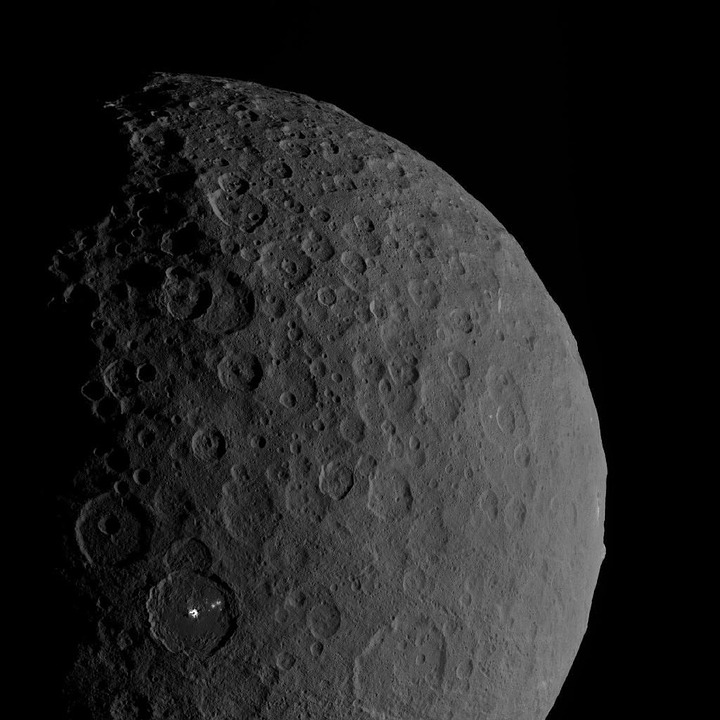One of the space rocks that space agency NASA is keeping tabs on is asteroid Bennu. Recently, the agency released a new image showing a closer look at the asteroid.
Express reports that the 500-meter long asteroid has been monitored by NASA for a while, and in 2018, the agency sent the Osiris-REx spacecraft to gather more info on Bennu. Now, NASA is preparing for another mission involving Bennu, of being able to land on the asteroid’s surface to collect samples. The agency scheduled this mission to be carried out by August, and has since shared an image of a potential landing spot of the spacecraft.
“This image shows sample site Nightingale Crater, OSIRIS-REx’s primary sample collection site on asteroid Bennu. The image is overlaid with a graphic of the OSIRIS-REx spacecraft to illustrate the scale of the site,” said the space agency. “In August, the robotic spacecraft will make NASA’s first-ever attempt to descend to the surface of an asteroid, collect a sample and ultimately bring it safely back to Earth.”
NASA also revealed that the mission went on its test run a few days ago on April 14th, where the spacecraft was placed OSIRIS-REx at its closest to Bennu. “This rehearsal is a chance for the OSIRIS-REx team and spacecraft to test the first steps of the robotic sample collection event,” the agency explained.
The agency is also reportedly wary of Bennu, as a collision from this asteroid could potentially destroy an entire country on Earth. There is also the possibility that it could hit the planet within the next 120 years, flying by Earth in 2035.
Meanwhile, it was previously reported that the asteroid 1998 OR2 will be passing by Earth at the end of the month, on the 29th of April. Space agencies have also been closely monitoring this particular asteroid, which was classified as a potentially hazardous object due to its size, measuring between 1 to 4 kilometers in diameter. Thankfully, the asteroid will not be colliding with Earth any time soon as the closest it can get would be at 6.29 million kilometers.
However at this time, astronomers can already see the asteroid hurtling through space and Earthbound. Virtual Telescope Project head Dr. Gianluca Masi said that OR2 would be bright enough for anyone to see through their telescopes on the day of the fly-by.



 Trump and Merck KGaA Partner to Slash IVF Drug Costs and Expand Fertility Coverage
Trump and Merck KGaA Partner to Slash IVF Drug Costs and Expand Fertility Coverage  NASA Partners with Katalyst to Save Swift Observatory with Innovative Docking Mission
NASA Partners with Katalyst to Save Swift Observatory with Innovative Docking Mission  Astronomers have discovered another puzzling interstellar object − this third one is big, bright and fast
Astronomers have discovered another puzzling interstellar object − this third one is big, bright and fast  FDA Pilot Program Eases Rules for Nicotine Pouch Makers
FDA Pilot Program Eases Rules for Nicotine Pouch Makers  SpaceX Starship Explodes in Texas During Test, Citing Nitrogen Tank Failure
SpaceX Starship Explodes in Texas During Test, Citing Nitrogen Tank Failure  Blue Origin’s New Glenn Achieves Breakthrough Success With First NASA Mission
Blue Origin’s New Glenn Achieves Breakthrough Success With First NASA Mission  Neuren Pharmaceuticals Surges on U.S. Patent Win for Rare Disorder Drug
Neuren Pharmaceuticals Surges on U.S. Patent Win for Rare Disorder Drug  Trump Signs Executive Order to Boost AI Research in Childhood Cancer
Trump Signs Executive Order to Boost AI Research in Childhood Cancer  NASA Astronauts Wilmore and Williams Recover After Boeing Starliner Delay
NASA Astronauts Wilmore and Williams Recover After Boeing Starliner Delay  Is space worth the cost? Accounting experts say its value can’t be found in spreadsheets
Is space worth the cost? Accounting experts say its value can’t be found in spreadsheets  Neuralink Expands Brain Implant Trials with 12 Global Patients
Neuralink Expands Brain Implant Trials with 12 Global Patients  Ancient Mars may have had a carbon cycle − a new study suggests the red planet may have once been warmer, wetter and more favorable for life
Ancient Mars may have had a carbon cycle − a new study suggests the red planet may have once been warmer, wetter and more favorable for life  Tabletop particle accelerator could transform medicine and materials science
Tabletop particle accelerator could transform medicine and materials science 































